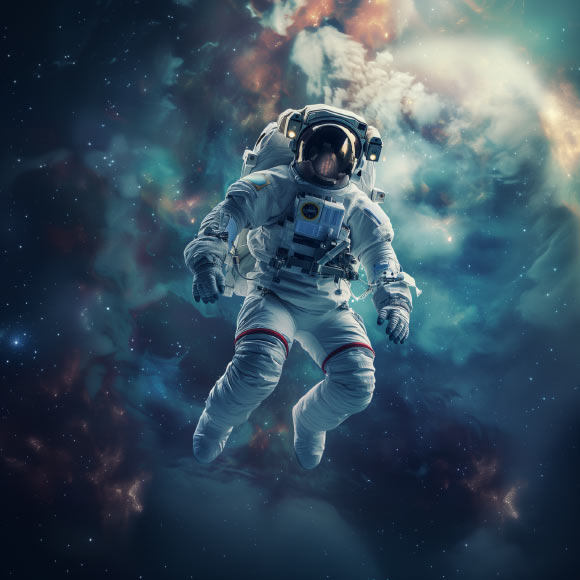New research has implications for crew safety in space and could potentially give clues to how aging affects people’s balance systems here on Earth.
Jörges et al. tackled the question of whether body posture influences human perception of self-motion and distance; they found some evidence that the same amount of optic flow can elicit the sensation of having traveled further when supine versus when sitting upright, that is, optic flow is more effective at eliciting a sense of self-motion when supine; this constitutes evidence that visual and non-visual cues are at least partially integrated even when self-motion is presented only visually; however, they did not find any significant differences between performance on Earth and in the microgravity of the ISS, suggesting that vestibular cues play a minor role, if any, in the estimation of visually presented self-motion.
“It has been repeatedly shown that the perception of gravity influences perceptual skill,” said York University’s Professor Laurence Harris, senior author of the study.
“The most profound way of looking at the influence of gravity is to take it away, which is why we took our research into space.”
“We’ve had a steady presence for close to a quarter century in space and with space efforts only increasing as we plan to go back to the moon and beyond, answering health-and-safety questions only becomes more important.”
“Based on our findings it seems as though humans are surprisingly able to compensate adequately for the lack of an Earth-normal environment using vision.
In the research, Professor Harris and colleagues studied a dozen astronauts aboard the International Space Station (ISS), which orbits about 400 km from the Earth’s surface.
“Here, Earth’s gravity is approximately cancelled out by centrifugal force generated by the orbiting of the station. In the resulting microgravity, the way people move is more like flying,” Professor Harris said.
“People have previously anecdotally reported that they felt they were moving faster or further than they really were in space, so this provided some motivation to actually record this.”
The authors compared the performance of a dozen astronauts — six men and six women — before, during, and after their year-long missions to the space station and found that their sense of how far they traveled remained largely intact.
Space missions are busy endeavors and it took the researchers several days to connect with the astronauts once they arrived at the space station.
“It’s possible our research was unable to capture early adaptation that may have occurred in those first few days. It’s still a good news message because it says that whatever adaptation happens, happens very quickly,” Professor Harris said.
Space missions are not without risk. As the ISS orbits the Earth it is sometimes hit with small objects that could penetrate the vessel requiring astronauts to move to safety.
“On a number of occasions during our experiment, the ISS had to perform evasive maneuvers,” Professor Harris said.
“Astronauts need to be able to go to safe places or escape hatches on the ISS quickly and efficiently in an emergency. So, it was very reassuring to find that they were actually able to do this quite precisely.”
“Our research shows exposure to microgravity mimics the aging process on a largely physiological level — wasting of bones and muscles, changes in hormonal functioning and increased susceptibility to infection — but this paper finds that self-motion is largely unaffected, suggesting the balance issues that frequently come from old age may not be related to the vestibular system.”
“It suggests that the mechanism for the perception of movement in older people should be relatively unaffected, and that the issues involved in falling may not be so much in terms of the perception of how far they’ve moved, but perhaps more to do with how they’re able to convert that into a balance reflex.”
The study was published in the journal npj Microgravity.
_____
B. Jörges et al. 2024. The effects of long-term exposure to microgravity and body orientation relative to gravity on perceived traveled distance. npj Microgravity 10, 28; doi: 10.1038/s41526-024-00376-6




